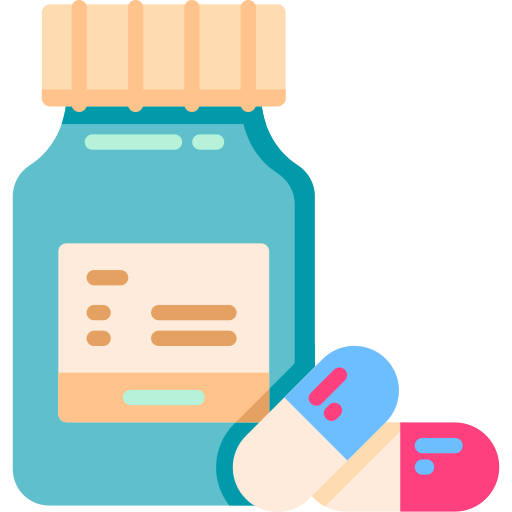
Type:15ml bot
Generic Name:Azithromycin
Manufacturer:Marksman Pharmaceutical Ltd.
Price:৳85.00
Bacterial infections, bacterial endocarditis, typhoid fever, community-acquired pneumonia, uncomplicated gonorrhea, streptococcal pharyngitis/tonsillitis, COPD, acute bacterial sinusitis, acute otitis media, uncomplicated UTI, Uncomplicated gonorrhea, PID, non-gonococcal urethritis, chancroid, acute salmonellosis, cervicitis, babesiosis, chlamydial infections, pelvic inflammatory disease, PID, traveler's diarrhea,
Oral Administration Tablet: Take tablets without regard to food; however, food may enhance tolerability Oral suspension Conventional oral suspension (100 mg/5 mL, 200 mg/5 mL) may be stored for 10 days after reconstitution and taken without regard to food Conventional 1 g package must be taken immediately after reconstitution Extended-release oral suspension must be taken on empty stomach within 12 hours of reconstitution; given only in single dose; not interchangeable with immediate release formulation IV Preparation Dilute 500-mg vial in 4.8 mL of SWI (100 mg/mL) Dilute further in NS to 1 mg/mL (500 mL) or 2 mg/mL (250 mL) IV Administration 1 mg/mL solution: Infuse over 3 hours 2 mg/mL solution: Infuse over 1 hour
Adult: PO Resp tract infections; Skin and soft tissue infections 500 mg once daily for 3 days. Chancroid; Non-gonococcal cervicitis/urethritis due to Chlamydia trachomatis; Uncomplicated genital infections due to Chlamydia trachomatis 1 g as a single dose. Prophylaxis of disseminated MAC infections 1.2 g once wkly. Treatment or secondary propjhylaxis: 500 mg once daily w/ other antimycobacterials. Uncomplicated gonorrhoea 2 g as a single dose. Granuloma inguinale Initial: 1 g, then 500 mg/day until all lesions have healed completely. Active immunisation against typhoid fever caused by Salmonella typhi 1 g once daily for 5 days. IV Community-acquired pneumonia 500 mg as a single IV daily dose for 2 days, then 500 mg single oral dose daily to complete 7-10 days of therapy. Pelvic inflammatory disease 500 mg as a single IV daily dose for 1-2 days, then 250 mg single oral dose daily to complete a 7-day therapy. Elderly: No dosage adjustment needed. Hepatic impairment: No dosage adjustment needed.
Child: PO: q24h Otitis: 10 mg/kg/day for 1 day, then 5 mg/kg for 4 days; or 10 mg/kg/day for 3 days; or 30 mg/kg once. Pharyngitis: 12 mg/kg/day for 5 days. Sinusitis: 10 mg/kg/day for 3 days. CABP: 10 mg/kg for 1 day, then 5 mg/kg/day for 4 days or 60 mg/kg once of ER susp MAC/PCP prophylaxis: 5 mg/kg/day IV: 10 mg/kg q24h >6 mth 10 mg/kg; 15-25 kg: 200 mg; 26-35 kg: 300 mg; 36-45 kg: 400 mg. All doses to be taken once daily for 3 days.
Renal impairment: No dosage adjustment needed.
Known hypersensitivity to azithromycin, erythromycin, any macrolide or ketolide antibiotic. Coadministration w/ pimozide. History of cholestatic jaundice/hepatic dysfunction associated w/ prior use of azithromycin.
Azithromycin is a semisynthetic azalide antibiotic. It blocks transpeptidation by binding to 50s ribosomal subunit of susceptible organisms and disrupting RNA-dependent protein synthesis at the chain elongation step.
May increase the risk of Torsades de pointes and fatal heart arrhythmias in patients w/ prolonged QT interval, low K or Mg blood levels, slow heart rate and medication treating abnormal heart rhythms. Impaired hepatic and renal function. Pregnancy and lactation. Monitoring Parameters Liver function tests, CBC w/ differential. Lactation: Unknown whether drug is excreted into breast milk; use with caution
>10% High single dose therapy Diarrhea (52.8%),Nausea (32.6%),Abdominal pain (27%),Loose stool (19.1%) 1-10% Cramping (2-10%),Vaginitis (2-10%),Dyspepsia (9% with single high dose therapy),Flatulence (9% with single high dose therapy),Vomiting (6.7% with single high dose therapy),Malaise (1.1%) <1% Agitation,Allergic reaction,Anemia,Anorexia,Candidiasis,Chest pain,Conjunctivitis,Constipation,Dermatitis (fungal),Dizziness,Eczema,Edema,Enteritis,Facial edema,Fatigue,Gastritis,Headache,Hyperkinesia,Hypotension,Increased cough,Insomnia,Leukopenia,Malaise,Melena,Mucositis,Nervousness,Oral candidiasis,Pain,Palpitations,Pharyngitis,Pleural effusion,Pruritus,Pseudomembranous colitis,Rash,Rhinitis,Seizures,Somnolence,Urticaria,Vertigo Potentially Fatal: Angioedema and cholestatic jaundice.
Pregnancy Available data from published literature and postmarketing experience over several decades with azithromycin use in pregnant women have not identified drug-associated risks for major birth defects, miscarriage, or adverse maternal or fetal outcomes (see Data); data do not suggest embryofetal risk (Developmental and Reproductive Toxicology Database [DART]; https://toxnet.nlm.nih.gov/newtoxnet/dart.htm) Animal data Developmental toxicity studies with azithromycin in rats, mice, and rabbits showed no drug-induced fetal malformations at doses up to 4, 2, and 2 times, respectively, an adult human daily dose of 500 mg based on body surface area; decreased viability and delayed development were observed in offspring of pregnant rats administered azithromycin from day 6 of pregnancy through weaning at a dose equivalent to 4 times an adult human daily dose of 500 mg based on body surface area Lactation Drug is present in human milk; non-serious adverse reactions reported in breastfed infants after maternal administration of therapy; there are no available data on effects on milk production; developmental and health benefits of breastfeeding should be considered along with mother’s clinical need for therapy and potential adverse effects on breastfed infant from drug or underlying maternal condition; advise women to monitor breastfed infant for diarrhea, vomiting, or rash.
Increases serum concentrations of digoxin, ciclosporin, terfenadine, hexobarbital and phenytoin. Decreased rate of absorption w/ antacids containing aluminium and magnesium. Increased risk of ergot toxicity. Potentially Fatal: Increased risk of cardiotoxicity w/ pimozide.